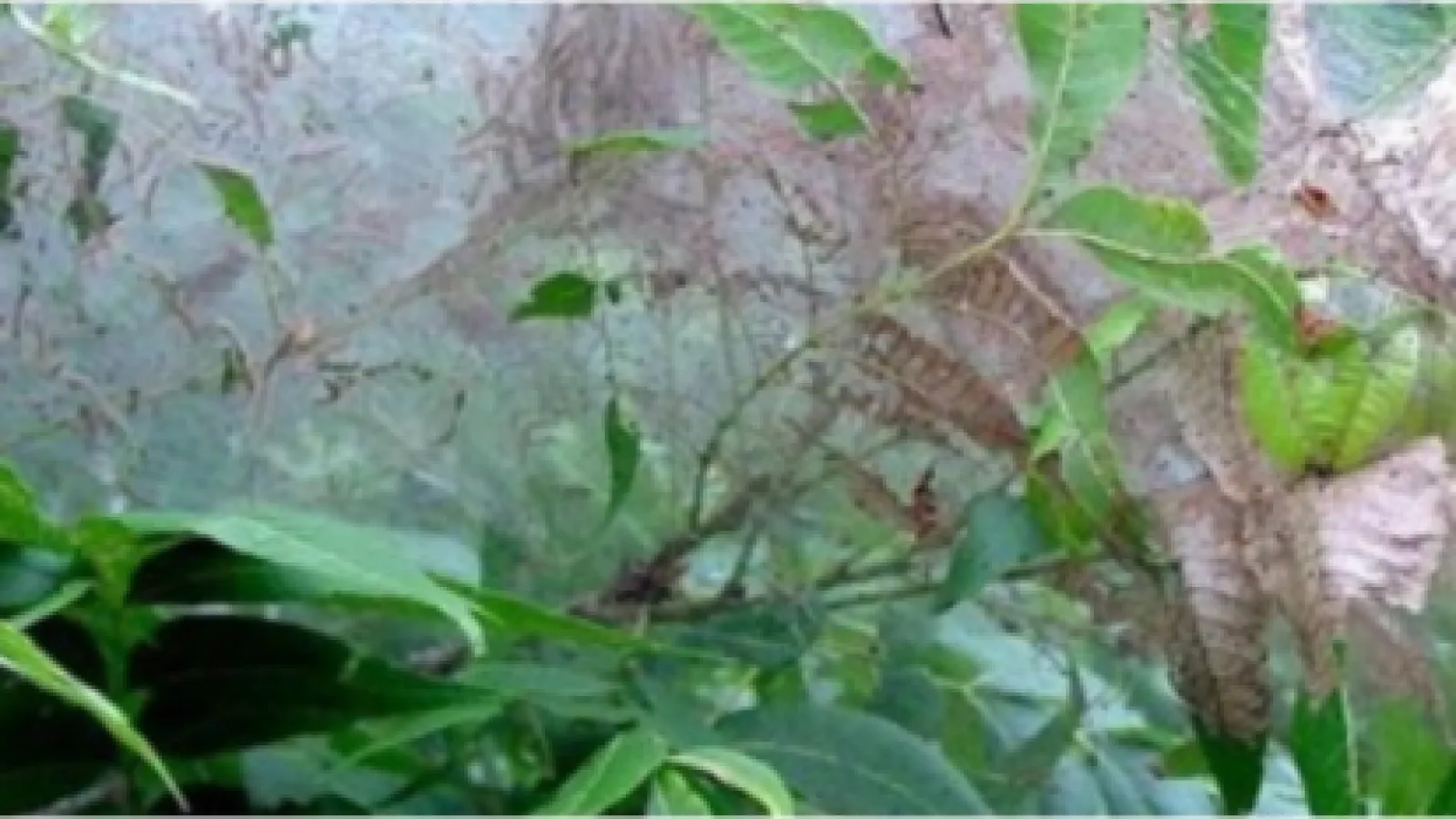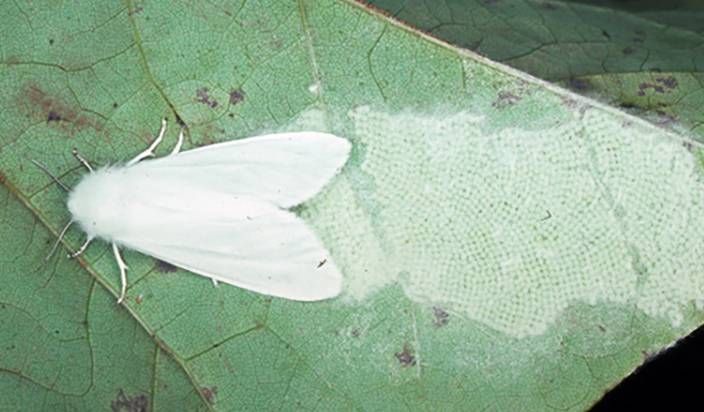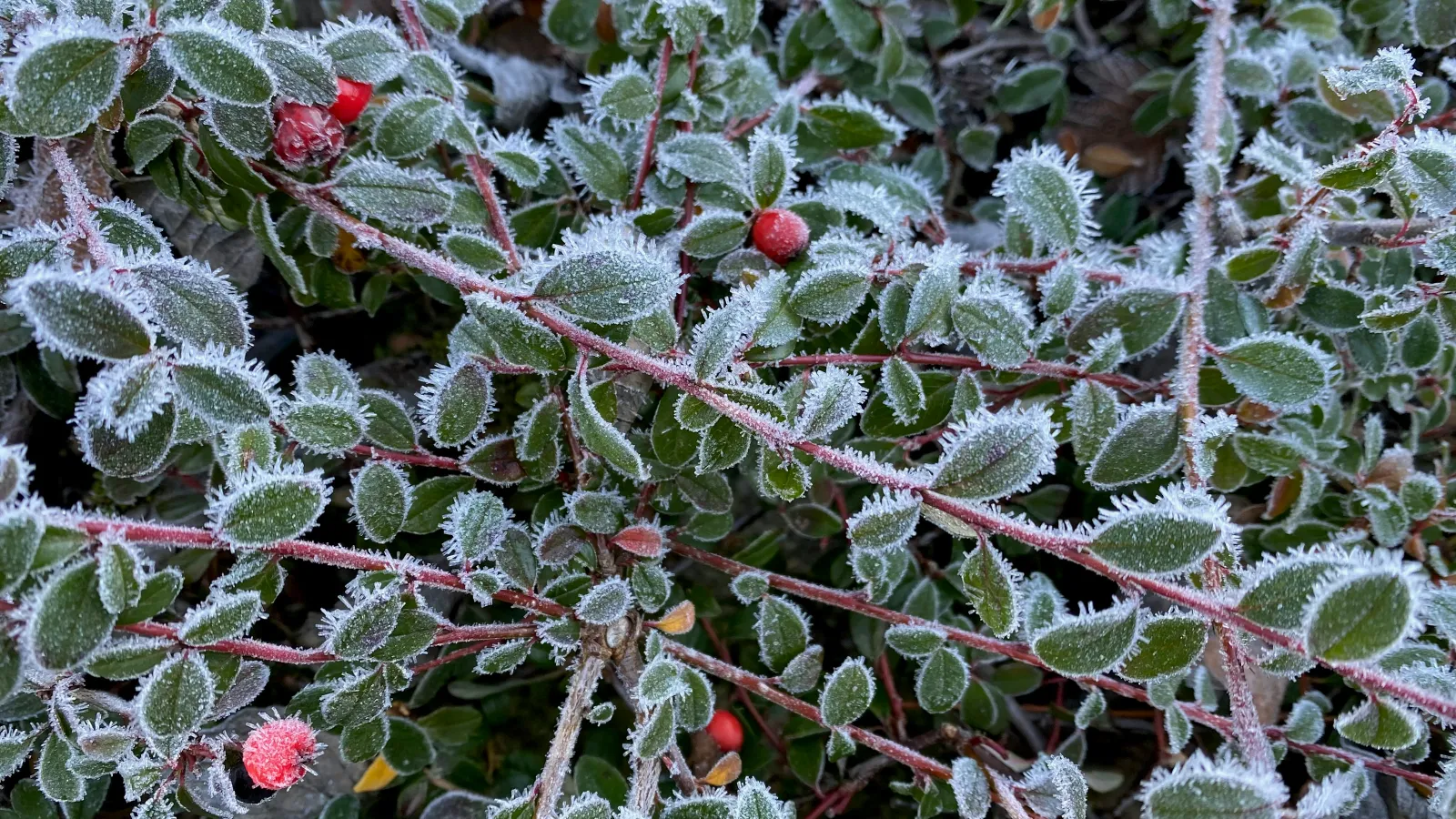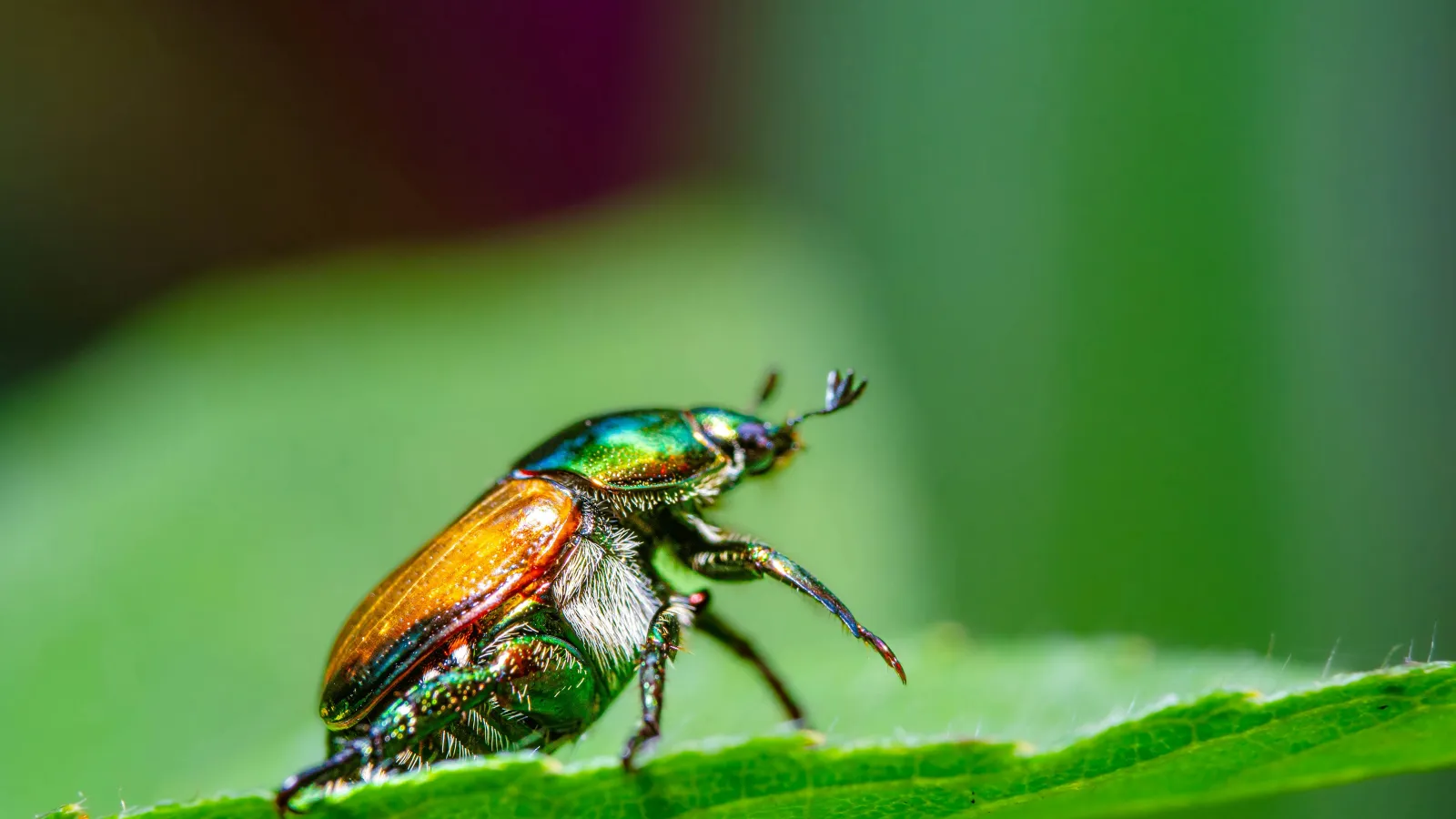
Fall Webworms
Have you ever noticed a thick web in your trees? And we're not talking about a large spider web. If so, you may have fall webworms. Fall webworms are native moths found throughout North America. They're also now seen worldwide, thanks to their accidental introduction to Europe during World War II. Keep reading to learn more about this pest.
What are fall webworms?
Not to be confused with tent worms or armyworms, fall webworms are not worms. They are moths best known for making webbed nests around a tree's branches during their worm-like larvae stage. The first visible signs of a fall webworm infestation occur when beige to brown webs irregularly enclose the ends of upper branches.
Fall webworms have no natural predators, and they're not picky. They can infest hundreds of tree species, but in our area, we most commonly see them on wild cherry, pecan, persimmon, mulberry, and sweetgum trees.

Webworm appearance
An adult webworm larva measures about 1 1/2″ long. They can be yellow with dark stripes and spots or a dull bluish-black color with no yellow. Their bodies are very hairy, and their heads are dark. Adult moths have a wingspan of 1 ½" and their color is nearly pure white.
Interestingly, there is only one species of the fall webworm, but there are two races or subspecies. The pure white moths have whitish caterpillars with blackheads, while the black-speckled white moths have tan-colored caterpillars with redheads. Both caterpillars have long, silky hairs with black dots on their bodies. The black-headed webworms construct a flimsy web while the redheaded build larger, more compact webbing over the ends of branches. Are you wondering which is most common in our area? According to the University of Georgia, we have both.

Are they dangerous?
The short answer is no. In the larva or moth form, webworms can't hurt humans, animals, or healthy plants. Although their webs are unsightly in trees, their damage is considered insignificant to established plants because the insect doesn't feed on the leaf veins, plus the leaves are about to fall off anyway. But if a young tree is infested, the webworms can sometimes completely defoliate the tree.
Fall webworm life cycle
The female can lay over 600 eggs on the underside of leaves. After only one week, they'll hatch as fine-haired black or redheads. Next, the caterpillars construct a web over the end of the branches, enclosing leaves, and begin to feed. The larvae (webworm) can feed for up to 6 weeks, but the webs can remain even after the larvae are gone.

Here's a tip to determine if the web is new or old. If the web is white, it's new. If it's tan or brown with no larvae, then it's older. Webs can last into the winter before falling out of the trees.
How do you control webworms?
A tree and shrub program is a great choice because you have a trained professional to identify potential threats or issues. As mentioned, webworms will not typically destroy a healthy, mature tree. However, there is an exception to everything, and this is no different. Webworms can damage or completely defoliate trees if they are not well established or unhealthy.
With that being said, if you are one to take things into your own hands, you'll love this! See a webworm nest? Grab a stick and poke some holes in the web. If you choose to leave the web after poking holes in it, wasps will invade the web, attack, and eat the caterpillars. If you have a larger group of caterpillars, you may want to ensure all eggs and larvae are gone. Take a stick and wrap the web around the stick and submerge it in soapy water.
More interesting facts about fall webworms
- Fall webworm caterpillars exhibit a rather remarkable behavior. They will bob, weave, and jerk in total unison with the others around them when their web is disturbed. Biologists cannot explain this synchronous behavior.
- The temperature inside the webbing varies between 104 to 122 degrees Fahrenheit.
- Moths rarely lay their eggs on the same branch or even in the same tree the following year.
- The female exhibits a form of parental care where she will try to protect the eggs by covering her eggs with her abdomen hairs.
If you need any assistance with these pests or any other tree and shrub needs, The Nice Guys are here to help.

